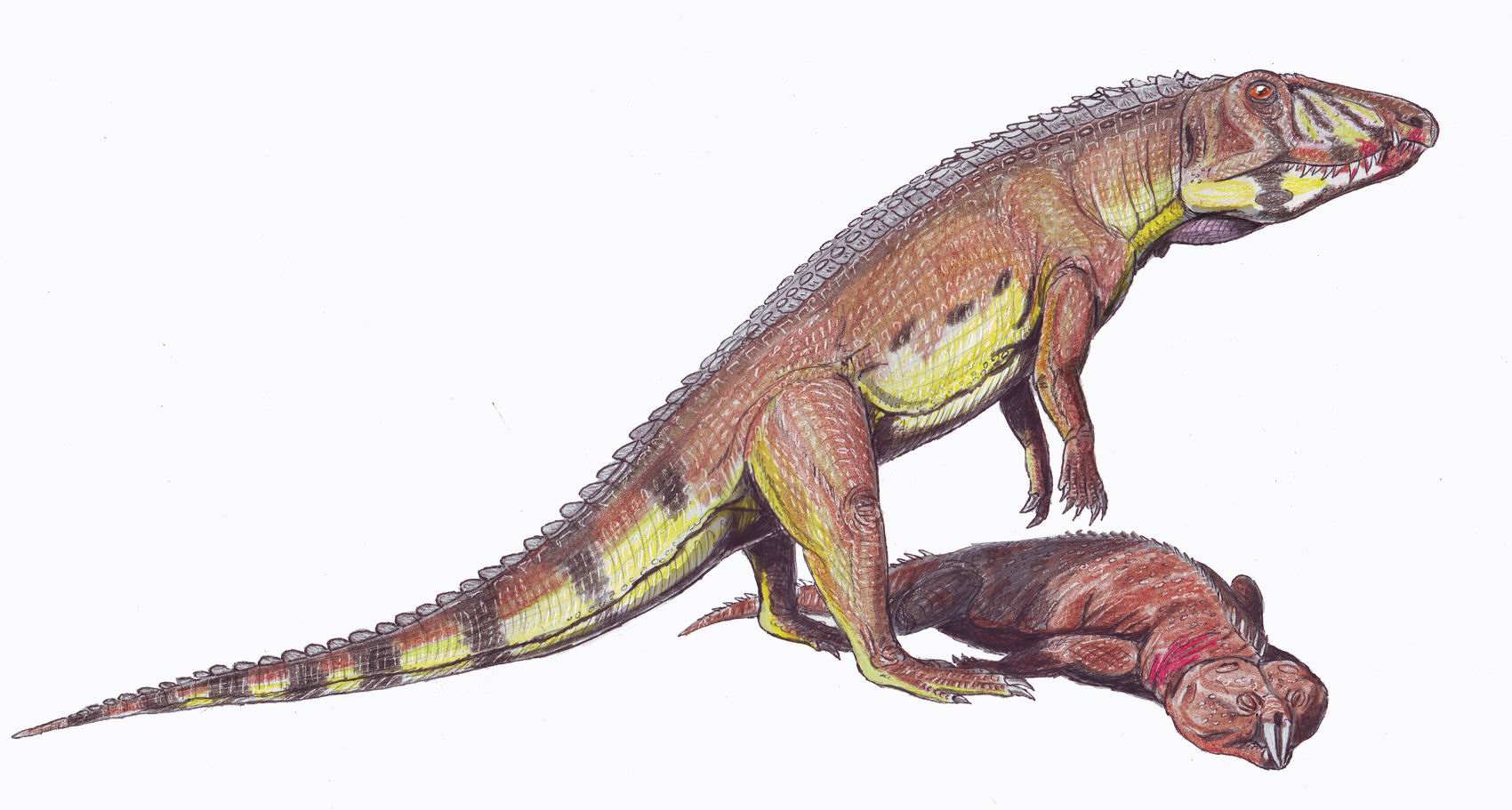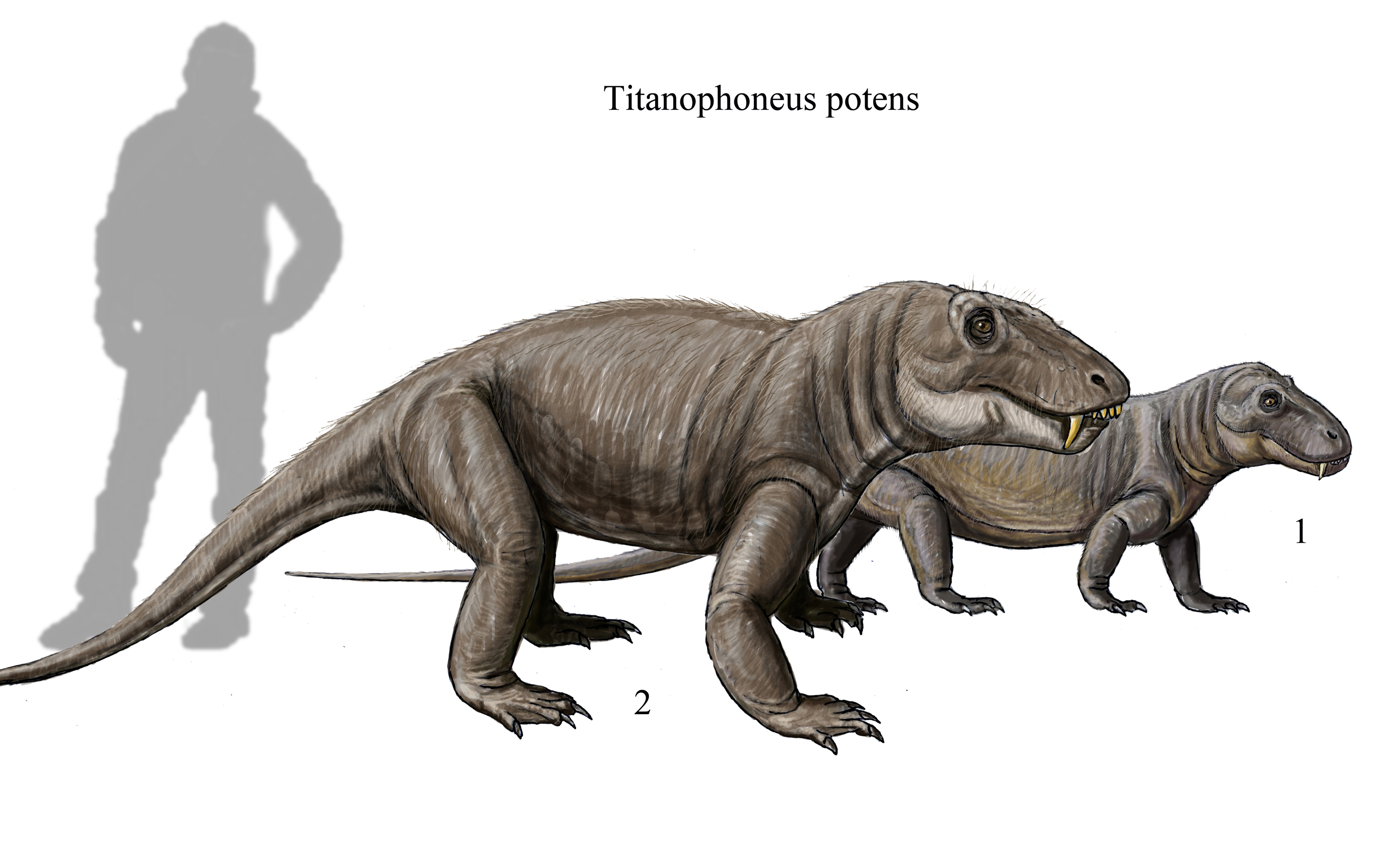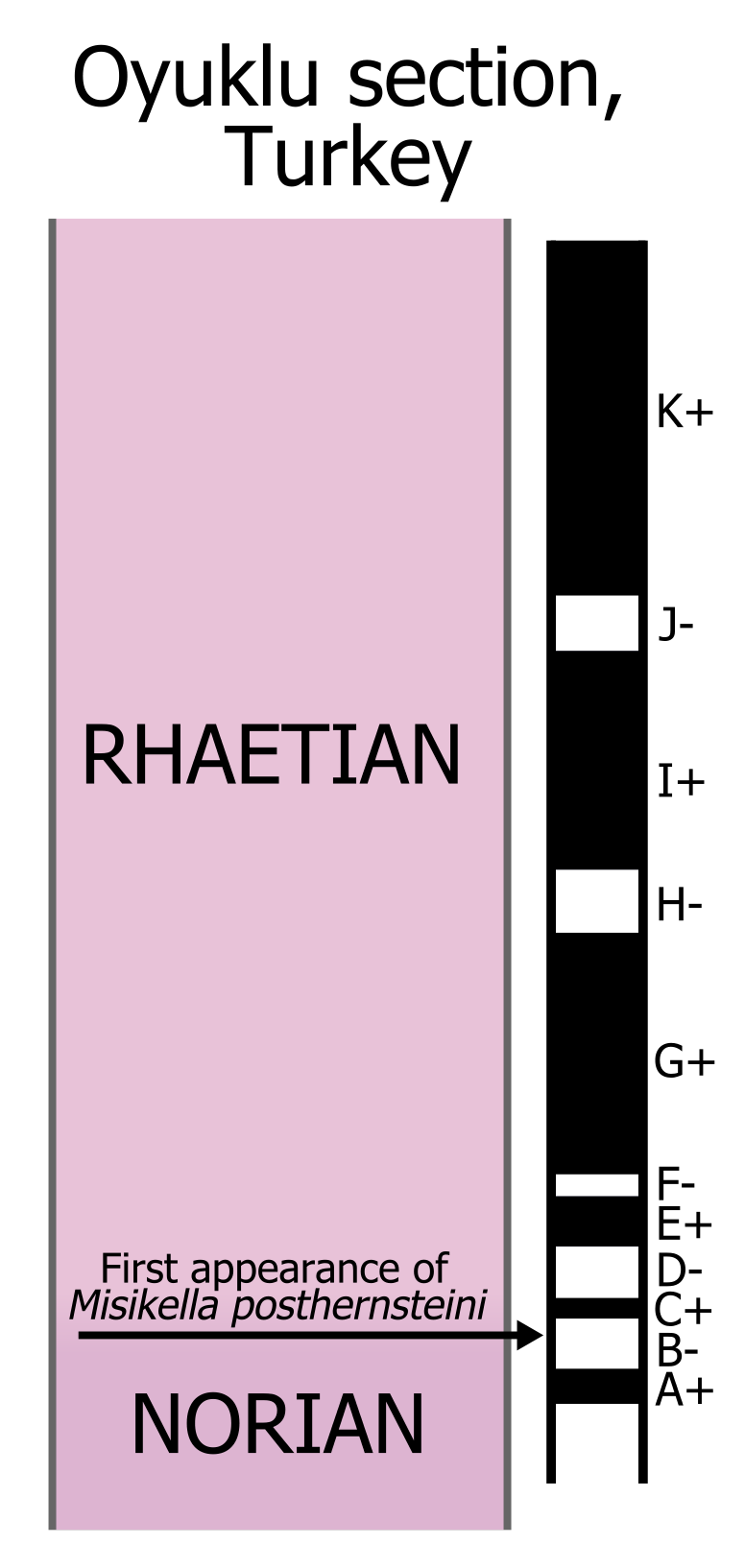|
Prolacertiformes
Protorosauria is an extinct polyphyletic group of archosauromorph reptiles from the latest Middle Permian (Capitanian stage) to the end of the Late Triassic (Rhaetian stage) of Asia, Europe and North America. It was named by the English anatomist and paleontologist Thomas Henry Huxley in 1871 as an order, originally to solely contain ''Protorosaurus''. Other names which were once considered equivalent to Protorosauria include Prolacertiformes and Prolacertilia. Protorosaurs are distinguished by their long necks formed by elongated cervical vertebrae, which have ribs that extend backward to the vertebrae behind them. Protorosaurs also have a gap between the quadrate bones and the jugal bones in the back of the skull near the jaw joint, making their skulls resemble those of lizards. While previously thought to be monophyletic, the group is now though to consist of various groups of basal archosauromorph reptiles that lie outside Crocopoda. Classification Protorosauria was consi ... [...More Info...] [...Related Items...] OR: [Wikipedia] [Google] [Baidu] |
Archosauromorph
Archosauromorpha (Greek for "ruling lizard forms") is a clade of diapsid reptiles containing all reptiles more closely related to archosaurs (such as crocodilians and dinosaurs, including birds) rather than lepidosaurs (such as tuataras, lizards, and snakes). Archosauromorphs first appeared during the late Middle Permian or Late Permian, though they became much more common and diverse during the Triassic period. Although Archosauromorpha was first named in 1946, its membership did not become well-established until the 1980s. Currently Archosauromorpha encompasses four main groups of reptiles: the stocky, herbivorous allokotosaurs and rhynchosaurs, the hugely diverse Archosauriformes, and a polyphyletic grouping of various long-necked reptiles including ''Protorosaurus'', tanystropheids, and ''Prolacerta''. Other groups including pantestudines (turtles and their extinct relatives) and the semiaquatic choristoderes have also been placed in Archosauromorpha by some authors. A ... [...More Info...] [...Related Items...] OR: [Wikipedia] [Google] [Baidu] |
Jesairosaurus
''Jesairosaurus'' is an extinct genus of early archosauromorph reptile known from the Illizi Province of Algeria. It is known from a single species, ''Jesairosaurus lehmani''. Although a potential relative of the long-necked tanystropheids, this lightly-built reptile could instead be characterized by its relatively short neck as well as various skull features. Etymology and discovery Zarzaïtine fossil material has been known since 1957. Much of the material has been recovered by French expeditions in the late 1950s and 1960s, and deposited at the Laboratoire de Paleontologie (Paleontology department) at the Museum national d'Histoire naturalle in Paris. Algerian fossils were prepared at this institution over subsequent years. Several putative procolophonid skeletons reported in 1971 were later determined to belong to " prolacertiforms" in 1990. The term "prolacertiform" is now considered to refer to an unnatural polyphyletic grouping of early archosauromorphs, distant relatives ... [...More Info...] [...Related Items...] OR: [Wikipedia] [Google] [Baidu] |
Malerisaurus
''Malerisaurus'' is an extinct genus of archosauromorph known from Andhra Pradesh of India and Texas of the USA. Description ''Malerisaurus'' was a medium-sized archosauromorph which averaged 1.2 meters in length. ''Malerisaurus'' is known from the holotype ISIR 150, two articulated and almost complete skeletons which were discovered as the presumable gastric contents of two skeletons of ''Parasuchus hislopi''. It was collected from the Lower Maleri Formation, dating to the late Carnian or early Norian stage of the Late Triassic. ''Malerisaurus robinsonae'' was a small archosauromorph, probably capable of climbing trees and swimming. The skull has some adaptations to a carnivorous diet, but is nevertheless unspecialised and probably more of an insectivore. ''Malerisaurus'', seen as a diapsid skull, shows primitive and advanced facies in its unossified laterosphenoid, absence of antorbital and mandibular fenestrae, gracile form, primitive girdles, elongated cervicals and a ... [...More Info...] [...Related Items...] OR: [Wikipedia] [Google] [Baidu] |
Middle Permian
The Guadalupian is the second and middle series/epoch of the Permian. The Guadalupian was preceded by the Cisuralian and followed by the Lopingian. It is named after the Guadalupe Mountains of New Mexico and Texas, and dates between 272.95 ± 0.5 – 259.1 ± 0.4 Mya. The series saw the rise of the therapsids, a minor extinction event called Olson's Extinction and a significant mass extinction called the end-Capitanian extinction event. The Guadalupian was previously known as the Middle Permian. Name and background The Guadalupian is the second and middle series or epoch of the Permian. Previously called Middle Permian, the name of this epoch is part of a revision of Permian stratigraphy for standard global correlation. The name "Guadalupian" was first proposed in the early 1900s, and approved by the International Subcommission on Permian Stratigraphy in 1996. References to the Middle Permian still exist. The Guadalupian was preceded by the Cisuralian and followed by the Lop ... [...More Info...] [...Related Items...] OR: [Wikipedia] [Google] [Baidu] |
Dinocephalosauridae
Dinocephalosauridae is an extinct clade of marine and terrestrial archosauromorph reptiles that lived throughout the Triassic period. Like tanystropheids, they are characterized by their long necks, lengthened by either addition of cervical vertebrae or elongation of the individual bones. Dinocephalosaurids are known from Europe (Poland, Germany, Austria, Netherlands) and China. Some members (i.e. '' Dinocephalosaurus'') are solely marine animals, most likely living near the coastlines of the Tethys Ocean, while other members (i.e. ''Pectodens'' were purely terrestrial, suggesting wide ecological diversity in just the few known species in this family. Classification In 2021, a phylogenetic study was conducted by S. Spiekman, N. Fraser, and T. Schayer in an attempt to clarify the systematics of " protorosaur" groups. A total of 16 individual trees were found using different character scoring methods and unstable OTU Otu or OTU may refer to: * Otu: ** Otu, Iran, a village in M ... [...More Info...] [...Related Items...] OR: [Wikipedia] [Google] [Baidu] |
Cervical Vertebrae
In tetrapods, cervical vertebrae (singular: vertebra) are the vertebrae of the neck, immediately below the skull. Truncal vertebrae (divided into thoracic and lumbar vertebrae in mammals) lie caudal (toward the tail) of cervical vertebrae. In sauropsid species, the cervical vertebrae bear cervical ribs. In lizards and saurischian dinosaurs, the cervical ribs are large; in birds, they are small and completely fused to the vertebrae. The vertebral transverse processes of mammals are homologous to the cervical ribs of other amniotes. Most mammals have seven cervical vertebrae, with the only three known exceptions being the manatee with six, the two-toed sloth with five or six, and the three-toed sloth with nine. In humans, cervical vertebrae are the smallest of the true vertebrae and can be readily distinguished from those of the thoracic or lumbar regions by the presence of a foramen (hole) in each transverse process, through which the vertebral artery, vertebral veins, an ... [...More Info...] [...Related Items...] OR: [Wikipedia] [Google] [Baidu] |
Paleontologist
Paleontology (), also spelled palaeontology or palæontology, is the scientific study of life that existed prior to, and sometimes including, the start of the Holocene epoch (roughly 11,700 years before present). It includes the study of fossils to classify organisms and study their interactions with each other and their environments (their paleoecology). Paleontological observations have been documented as far back as the 5th century BC. The science became established in the 18th century as a result of Georges Cuvier's work on comparative anatomy, and developed rapidly in the 19th century. The term itself originates from Greek (, "old, ancient"), (, ( gen. ), "being, creature"), and (, "speech, thought, study"). Paleontology lies on the border between biology and geology, but differs from archaeology in that it excludes the study of anatomically modern humans. It now uses techniques drawn from a wide range of sciences, including biochemistry, mathematics, and engineering. ... [...More Info...] [...Related Items...] OR: [Wikipedia] [Google] [Baidu] |
Anatomist
Anatomy () is the branch of biology concerned with the study of the structure of organisms and their parts. Anatomy is a branch of natural science that deals with the structural organization of living things. It is an old science, having its beginnings in prehistoric times. Anatomy is inherently tied to developmental biology, embryology, comparative anatomy, evolutionary biology, and phylogeny, as these are the processes by which anatomy is generated, both over immediate and long-term timescales. Anatomy and physiology, which study the structure and function of organisms and their parts respectively, make a natural pair of related disciplines, and are often studied together. Human anatomy is one of the essential basic sciences that are applied in medicine. The discipline of anatomy is divided into macroscopic and microscopic. Macroscopic anatomy, or gross anatomy, is the examination of an animal's body parts using unaided eyesight. Gross anatomy also includes the branch of ... [...More Info...] [...Related Items...] OR: [Wikipedia] [Google] [Baidu] |
North America
North America is a continent in the Northern Hemisphere and almost entirely within the Western Hemisphere. It is bordered to the north by the Arctic Ocean, to the east by the Atlantic Ocean, to the southeast by South America and the Caribbean Sea, and to the west and south by the Pacific Ocean. Because it is on the North American Plate, North American Tectonic Plate, Greenland is included as a part of North America geographically. North America covers an area of about , about 16.5% of Earth's land area and about 4.8% of its total surface. North America is the third-largest continent by area, following Asia and Africa, and the list of continents and continental subregions by population, fourth by population after Asia, Africa, and Europe. In 2013, its population was estimated at nearly 579 million people in List of sovereign states and dependent territories in North America, 23 independent states, or about 7.5% of the world's population. In Americas (terminology)#Human ge ... [...More Info...] [...Related Items...] OR: [Wikipedia] [Google] [Baidu] |
Europe
Europe is a large peninsula conventionally considered a continent in its own right because of its great physical size and the weight of its history and traditions. Europe is also considered a Continent#Subcontinents, subcontinent of Eurasia and it is located entirely in the Northern Hemisphere and mostly in the Eastern Hemisphere. Comprising the westernmost peninsulas of Eurasia, it shares the continental landmass of Afro-Eurasia with both Africa and Asia. It is bordered by the Arctic Ocean to the north, the Atlantic Ocean to the west, the Mediterranean Sea to the south and Asia to the east. Europe is commonly considered to be Boundaries between the continents of Earth#Asia and Europe, separated from Asia by the drainage divide, watershed of the Ural Mountains, the Ural (river), Ural River, the Caspian Sea, the Greater Caucasus, the Black Sea and the waterways of the Turkish Straits. "Europe" (pp. 68–69); "Asia" (pp. 90–91): "A commonly accepted division between Asia and E ... [...More Info...] [...Related Items...] OR: [Wikipedia] [Google] [Baidu] |
Asia
Asia (, ) is one of the world's most notable geographical regions, which is either considered a continent in its own right or a subcontinent of Eurasia, which shares the continental landmass of Afro-Eurasia with Africa. Asia covers an area of , about 30% of Earth's total land area and 8.7% of Earth's total surface area. The continent, which has long been home to the majority of the human population, was the site of many of the first civilizations. Its 4.7 billion people constitute roughly 60% of the world's population. In general terms, Asia is bounded on the east by the Pacific Ocean, on the south by the Indian Ocean, and on the north by the Arctic Ocean. The border of Asia with Europe is a historical and cultural construct, as there is no clear physical and geographical separation between them. It is somewhat arbitrary and has moved since its first conception in classical antiquity. The division of Eurasia into two continents reflects East–West cultural, linguistic, ... [...More Info...] [...Related Items...] OR: [Wikipedia] [Google] [Baidu] |
Rhaetian
The Rhaetian is the latest age of the Triassic Period (in geochronology) or the uppermost stage of the Triassic System (in chronostratigraphy). It was preceded by the Norian and succeeded by the Hettangian (the lowermost stage or earliest age of the Jurassic). The base of the Rhaetian lacks a formal GSSP, though candidate sections include Steinbergkogel in Austria (since 2007) and Pignola-Abriola in Italy (since 2016). The end of the Rhaetian (and the base of the overlying Hettangian Stage) is more well-defined. According to the current ICS (International Commission on Stratigraphy) system, the Rhaetian ended ± 0.2 Ma (million years ago). In 2010, the base of the Rhaetian (i.e. the Norian-Rhaetian boundary) was voted to be defined based on the first appearance of '' Misikella posthernsteini'', a marine conodont. However, there is still much debate over the age of this boundary, as well as the evolution of ''M. posthernsteini''. The most comprehensive source of precise age ... [...More Info...] [...Related Items...] OR: [Wikipedia] [Google] [Baidu] |






.jpg)

